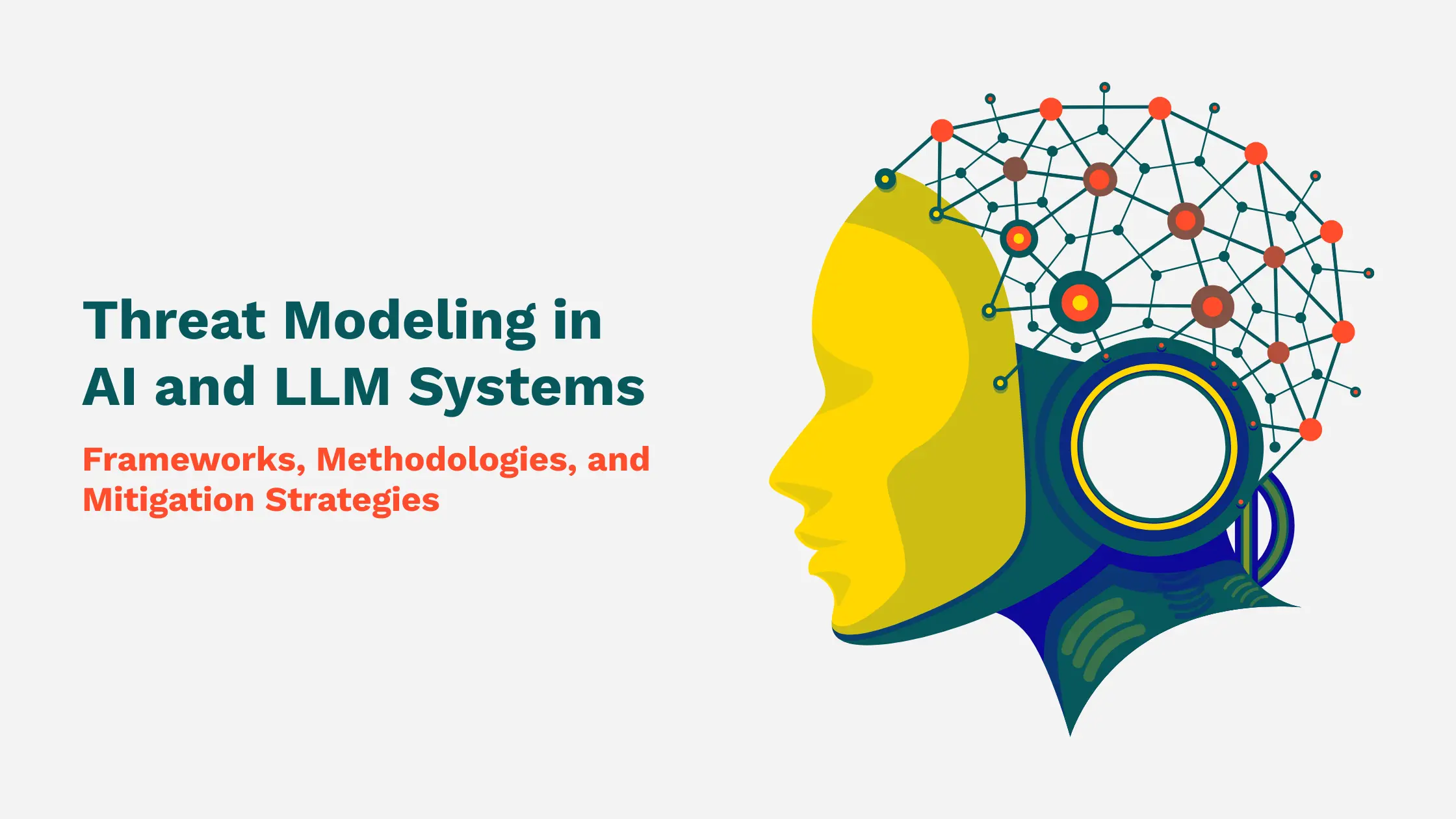
Traditional threat models assume static behaviors and predictable logic. In contrast, AI and LLMs (large language models) are data-driven, interactive systems with dynamic and often unpredictable outputs.
They enable conversational interfaces and decision-making engines, but they also introduce novel attack vectors.
Generative AI and LLMs can be manipulated using methods like prompt injection, model inversion, and data leakage — bypassing many safeguards built for traditional software.
This is why AI-specific threat modeling is critical. It helps identify new risks early, design proactive controls, and secure components like training data, model weights, inference APIs, and real-time prompts.
Both CISOs and AI developers must be involved to safeguard generative AI systems effectively.
Threat modeling is a proactive method to identify and mitigate security risks before they are exploited. In the context of AI and LLMs, it adapts to systems that rely on probabilistic logic, massive datasets, and black-box behaviors.
Unlike traditional apps, generative AI and LLMs involve:
These introduce risks such as prompt hijacking and data extraction. AI threat modeling maps these components, identifies how they can be attacked, and creates defense strategies tailored to generative models.
With AI and LLMs embedded in critical business applications, security blind spots can lead to major breaches. Public-facing generative AI systems expand the attack surface dramatically.
Threats include:
Compliance frameworks like the EU AI Act and NIST AI RMF also demand secure and transparent AI systems.
Threat modeling provides a structured way to meet these expectations and implement risk-based controls specific to LLMs and generative AI.
Effective threat modeling for AI and LLMs starts by identifying all valuable assets:
These assets often carry sensitive or proprietary data.
Adversaries can include:
Attack vectors specific to LLMs and generative AI include:
You may want to read: Penetration Testing for LLMs.
Several threat modeling frameworks are adaptable for AI and LLMs:
LLMs and Generative AI: Key Frameworks
Each framework helps teams model threats and choose mitigation strategies effectively across the generative AI and LLM lifecycle.
Attackers can hijack AI responses using cleverly crafted prompts, overriding system logic or accessing sensitive data.
This technique allows threat actors to reconstruct training data — posing significant risk when models are trained on private or regulated data.
.webp)
Malicious inputs can trigger biased, harmful, or manipulated responses. These can bypass safeguards and harm users or organizations.
Bad actors may fine-tune open models with misleading content and distribute them as reliable alternatives, weaponizing LLMs and generative AI.
Compromised plugins or datasets integrated into AI workflows can introduce backdoors or harmful behaviors into otherwise secure systems.
The process includes:
Determine which model components need protection:
Clarify where and how different users, systems, and services interact with the AI model. Identify which inputs are trusted and which are not.
.webp)
Map possible threats using frameworks like STRIDE and the OWASP Top 10 for LLMs:
Assess the impact and likelihood of each risk and prioritize accordingly.
Implement:
All aligned with internal security policies and compliance guidelines.
To secure AI and LLMs, combine system-level and model-level controls:
Use strict input formatting and sanitize user input to prevent prompt manipulation.
Incorporate techniques like differential privacy and federated learning to minimize sensitive data exposure during training.
Prevent harmful outputs with filters and human-in-the-loop moderation for high-risk scenarios.
Isolate production models, restrict access, and monitor for abnormal activity in generative AI systems.
Track usage, outputs, and system behavior. Alert security teams when suspicious activity occurs.
Vet all third-party tools and enforce strict permissions. Poorly vetted plugins can compromise even robust models.
AI and LLMs are not static — they evolve with:
Each of these shifts can create new vulnerabilities. Embed continuous threat modeling into your MLOps or DevSecOps pipelines.
Encourage collaboration across:
Monitor live environments to uncover threats that were missed during testing.
Traditional threat models can’t keep pace with the dynamic nature of AI and LLMs. As generative models become more powerful, they also become more vulnerable.
Continuous threat modeling equips organizations to anticipate, detect, and prevent threats before damage occurs.
Security professionals, engineers, and AI teams must work together to keep LLMs and generative AI safe, ethical, and compliant.
Ready to secure your AI stack? Contact us to integrate LLM-specific threat modeling into your pipeline.
LLMs and generative AI introduce risks like prompt injection, fine-tuning abuse, and data leaks. These threats arise from model openness, plugin use, and untrusted inputs.
Risk management in large language models (LLMs) involves zero-trust principles — verifying all inputs, minimizing permissions, and continuously monitoring model use.
AI threat detection uses machine learning and behavioral analysis to detect abnormal activity and potential cyberattacks in real-time.
LLMs are foundational models, while AI agents use LLMs to interact and perform tasks. Agents may include reasoning, memory, or plugin tools built atop LLMs.